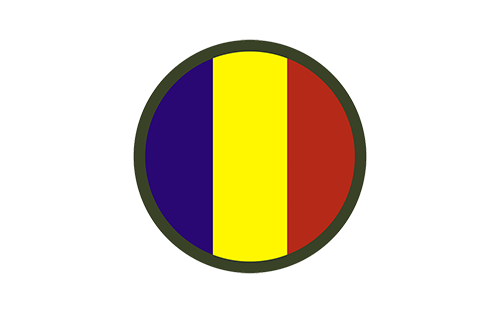The views and opinions in this discussion thread are those of blog participants and not the views of TRADOC or the United States Army.
Additional Resources
Help and Support
Other Army Sites
Staying Connected
Watch LPD Videos On
Watch LPD Videos On


Using proxies to fight them. Adding economic, financial, logistics and technology denial teams to the proxy warfare effort.
Through the use of persistent information overmatch through the combined communities and abilities of multiple partner nations.
By creating specialist Competition-focused units. These units could be use during crisis and conflict to augment battlefield understand, but they primary focus in to be experts in maneuver at non-kinetic battlespaces.
A typical Active Conflict Engagement (ACE) Platoon could, for example, consist on:
– a Mind and Body Warfare Squad (Capabilities: psychology, neuroscience, microbiology, medical drugs, history/sociology),
– a Trade and Law Warfare Squad (Capabilities: Trade, International Laws, Adversary Doctrine expertise), and
– a Data and Computing Squad (Capabilities: Network and Cybersecurity, Data Science, and AI/ML/DNN, media verification/creation/manipulation )
These units could operate in any theater and be use defensively (report and clarify effects of actions in specific battlespaces) or offensively (devise plans/operations in how to engage adversary successfully in all those battlespaces). The information and knowledge generated by such unit could be used during crisis and conflict phase both by advising/predict effects on a kinetic operation, help ID key targets that could reshape one of the battlespaces (asymmetric warfare) and block/subvert any enemy attempts to support their efforts in these non-traditional battlespaces (i.e. try to reshape social media against the Army operations).
Information advantage should not be presumed to be maintained but will ebb & flow like the rest of the battle. To this end, consider an information dominance battle drill to halt the enemy and regain the initiative. This must be unique to the culture as it must strike a cultural “fault line”. Examples may be the public concept of Russian or Arab masculinity, launch a deep fake disinformation campaign to reduce fracture the established social association of the leader with the archetype. Alternatively, in the case of Socialist/Communist adversaries consider the cultural fault line of equity or fairness and unity in society. Highlighting an adversary’s acts of injustice and or inequality exploits this, publishing in the native language creates internal dissent while multiple languages can erode international support. Simple meme’s or in-depth article or “exposed emails” are methods that have been used in the grey space in the past. As with any good PACE plan concept a failsafe is to deny/disrupt/destroy the Information Domain to the extent possible to create a regional blackout.
Teach Soldiers how to vet information. Just as in any other contested environment, defense is as important as offense, and one aspect of that contest is protecting our force from the enemies’ attempts to take the upper hand. One important way of doing that is making a robust effort to teach Soldiers how to vet information for datedness, accuracy and completeness of the picture it paints, and probably most importantly, reliability of the sources. Without Soldiers capable of competently understanding the sources they use and information gleaned from them, the Army can excel at developing very sophisticated offensive efforts, and fail because a commander or 1SG takes a keen interest in a story from RT, and decides to share it with his or her unit. To this end, developing Cybersecurity training along the line of OPSEC training would be use full, because the Cybersecurity Challenge is outdated, a repackaging of the old IA that concentrates on physical control of media, and email, and not nearly as enough time on the danger of websites created and maintained actors interested in shaping ideas and perspectives. We can shape the information that adversaries, and gain access into their systems, but it is of little use, if they are free to do the same to us. Maybe we need a broad course on INFOSEC on par with OPSEC.
I’m not quite sure how the US Army would maintain info dominance in a battlespace that Russia knows so well. I cite a US Army analysis of the Nazi Germany offensive during WWII and if you read that 1955 document you find that information, or lack thereof, was a critical issue, but overwhelmed by other concerns re weather, terrain, logistics, etc. It is nice to focus attention on info dominance but nuts and bolts issues, dirty and in the weeds (when is the next supply drop?).
I think that, as General Neller, former commandant, USMC, once said (paraphrasing), if the satellites and GPS are neutralized, then what? You turn back to paper maps and grease pencils. He also pointed out that over the past couple of decades, the US military has not had to fight to get to the fight. The services have taken for granted that they will have coordinates and communications, digital that is, always available. That will not be the case, say, in Russia or China’s back yard. They will have prepared denial operations to zap US military comm links. At any rate, I agree with one of the posters here that the ebbs and flows of war, battle, are important to prepare for. An over reliance on the electromagnetic spectrum to meet ground combat goals and objectives is pretty risky.
Although it is often difficult to learn from geniuses on how they think, there may be some value in studying people who are experts in processing information in dynamic and confusing environments. For example, Gen. Grant at Vicksburg was presented with misleading reports of success by Gen. McClernand yet was able to sort through the fog to reject the reports and proceed accordingly. Similarly, more modern examples are in the financial markets, where isolated individuals can rack up impressive strings of moves that accumulate extraordinary wealth. The problem is how to identify these geniuses before important events, rather than afterwards. The U.S Army probably has quite a few unidentified information processing geniuses in its ranks. One method of identifying them would be to study historic scenarios and then use generative adversarial network (GAN) methods, or similar, to generate artificial scenarios. Such scenarios can be used to screen and train a cohort of information processing experts that will help to sustain information dominance in future dynamic and confusing situations.
The US Army should doctrinally shift from a focus on material effects based orders to a paradigm consisting of both that and how individuals receive information. It’s the difference between blowing up a bridge to stop reinforcements to Crimea, versus a cohesive narrative strategy of disinformation, sowing hesitancy and confusion, legitimacy amongst residents, dominance, coercion, and inevitability matched with little green men. As Sun Tzu roughly says, better for an opposing army to lay down its weapons than to fight it.
I have two suggestions for this. First, prioritize and emphasize narrative during planning and Wargaming phases, especially highlighting the initial distribution to the very hungry media / public to incentivize their attention and lend to credibility of Us forces; and focusing on potential scenarios to respond to quickly, so that slow reactions are not delayed to the point of being irrelevant in this age of 24-hour media. The modus operandi here is to get the truth out first (I believe this is attributable to to Gen. Petraeus).
Second, information dominance should include not just CYBER but also PSYOPS / MISO. Extracting exquisite intelligence is vitally important, but so is disseminating that not just within the US Army but also (without revealing secrets or methods of detection) the rest of the world. Part of that is public, credible, and quick attribution, but also part of that convincing soldiers and civilians of the reasons why some (emphasis on demonstrable) action is taken. If we deter cyber crime originating in other countries through asymmetric sanctions, expulsions, and name and shame, the question remains is that sufficient to deter future cyber incidents, or should we (publicly) respond in kind in addition? To integrate information operations and cyber should not just be doctrinal, but perhaps also organizationally with PYSOPS (or MISO) moved under CYBERCOM.
We can’t, at least not by ourselves. This has to be whole of government orchestrated effort. Although establishing an agency to compete here may be Orwellian, I’m not sure we have a choice if we are going to have any hope to gain a position of relative advantage.
Information should not be considered as an afterthought, nor as an enabler, rather it is an integral part in everything we do, and should be valued as such. There needs to be a more concerted effort to activity promote information and fight disinformation regardless of the medium on which it is conveyed, and an overarching purpose to how it is employed in various commands and campaigns. A good start might be for DoD to staff the Principal IO Advisor position, with support from Service representatives, and for the Army accordingly to have a senior Army IO position, supported with staff to ensure coordination across DoD, with the Joint Staff, the other Services, and across the Army. Crucially, the information-related activities (Public Affairs, IO, MISO/PsyOps) must be synced to support Army and DoD objectives. Too often these activities are siloed, and while some separation is important, coordination is essential to layer and further information objectives. Additionally, while it’s often tempting to link cyber and information because they both have nebulous ‘domains,’ in that they everywhere and yet nowhere, pushing information towards cyber would more likely relegate it to a side role as opposed to having information in the forefront of planning and operations.
“The supreme art of war is to subdue the enemy without fighting” Sun Tsu.
Our goal is to win competition because the alternative is armed conflict, pitting our instruments of national power against our adversaries. We must set the conditions now to overwhelmingly encouraging our adversaries to bend to our will, and not poke the tiger. we can do this through aggressively seeking to correlate information through artificial intelligence linking potential targets on the joint integrated priority target list (JIPTL) with fully capable shooters. All anti-access area denial, integrated air defense systems, Command posts, critical infrastructure, tanks, and aircraft must be targeted now for action when the national command authority says, “go.”